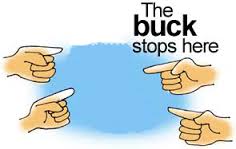Gratitude is not only the greatest of virtues, but the parent of all others. ~ Cicero
Being grateful to people who contributed to our success is not a common practice. Probably this is due to lack of role models for us to watch and emulate. Marshall Goldsmith is very passionate about being grateful and saying ‘Thank You’ to people. If you meet him in person, you will sense his gratitude and thankful feeling in the first 5 minutes.
In his coaching practice, he recommends leaders to do the following.
- List 25 people who have made a positive difference to their career. In addition to workplace colleagues, this list can include their friends/relatives/family/teacher/role model and so on.
- Write a ‘Thank You’ note to these people (e-mail/personal letter/written note)
I read about this idea two years ago and didn’t take action though the idea appealed to me immediately. I was worried about what would others think when they see such a note from me! What if they think I am phony or dramatic or naïve? Finally I decided to let go of others’ opinion and did this exercise. I did this because I wanted to ‘walk the talk’, not just ‘talk the talk’. Before I recommend this to my coaching clients, I wanted to get a firsthand (not vicarious) experience.
I wrote 24 names in my list. The list included my managers, virtual team leads, mentors at Toastmasters club, motivated colleagues, mentor coach, coach friends etc. Many people on the list are now in different organizations or countries and I took 3 days to gather their contact details (Thanks to LinkedIn). I sent a short note of gratitude in an e-mail comprising 160 words.
As I hit the ‘send’ button for each e-mail addressed individually, my excitement and feelings of gratitude intensified. I sensed a great amount of energy rushing in my body. It was a phenomenal experience!!! After I sent the 24th e-mail, I felt like a guru of gratitude and was no longer bothered about the outcome of these e-mails. I genuinely meant what I said in the e-mail and I knew I wasn’t playing around.
Three things happened as a result of this activity (though I didn’t expect any).
- Most people replied back and said they were touched by that e-mail. They felt honored to know the fact that they have a hand behind my success and I acknowledge that hand.
- Some people also shared their thoughts about me and how I inspired them to perform well (this was a pleasant surprise to me)
- Few people loved this idea, they are now planning to take this forward and send a ‘Thank You’ note to people who contributed to their success
If you like this exercise, please go ahead and act on this NOW! I promise, the bliss you will experience after the activity is infinitely greater than the pinch you feel while doing this J
Thank You for reading, acting and sharing!!!




